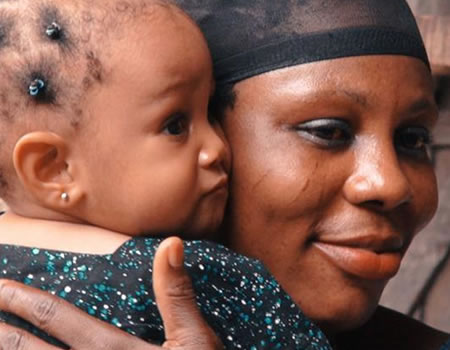ACROSS Africa, women can be seen carrying sleeping or sometimes giggling babies on their backs, swathed in cloth. The babies move to the sway of their mothers’ hips, synchronised throughout the day, bending with them as they carry out their house chores or carry out their trade.
When it is time for feeding, the food is right there as a mother shifts her child to the front of her body, nestling the infant to her breast. Quite often, there is the physical need to be in close contact with the mothers and this need is also met.
The sophisticated women, for the convenience of having their hands free to steer a toddler, dial a cell phone or fashion fad, had switched to baby carriers, which can assume various positions, including the vertical position, cradle hold, kangaroo carry, front carry, hip carry, and back carry.
Traditionally, baby slings and carriers were simply adaptations of whatever a culture normally used to carry anything heavy. Baskets, calabashes, animal skins, and wooden carrying structures have all been adapted to carry infants and children.
Infant-carrying on the back is commonly seen in Africa. It is done from almost any age, with appropriate care and caution for protection of airway and spine, and with the appropriate sling to facilitate safe positioning.
Front carrying position is prevalent in Mayan society, as well as in western countries, while carrying infants with side sling is more common in East Africa, and in the island of Pacific and Indian ocean.
Despite the benefits of infant-carrying for the mother and child, the different techniques come with a heavy price for the mother, including extreme strain, fatigue and low back pain.
Certainly, every woman’s preference can be influenced by cultural norms, age of the baby, fashion and convenience. In fact, most women will mention fatigue of carrying, back pain and breathlessness as reasons for choosing one infant carrying method over others.
Now, in a new study, researchers had compared the back wrap, front wrap, and hip sling infant carrying techniques to see which gives less fatigue, low back pain or makes movement easier.
The researchers assessed effect of a back wrap, front wrap, and hip sling infant carrying techniques on heart rate (HR), systolic blood pressure (SBP), and diastolic blood pressure, energy expenditure and ease of movement.
They had compared the effects of the different infant-carrying techniques when a baby weighs about 10 kgs, weight is similar to that of a child at age 9 months. Many babies at this age are yet to walk and do other things and will depend on being carried around.
Their recommendation in the 2019 study published in the journal, Health Care for Women International is that back wrap infant carrying technique may prove to be the best option for many nursing mothers.
They found that hip sling infant carrying technique was more strenuous and energy-consuming than other carrying methods. Front infant carrying position has the next highest fatigue score followed by back infant carrying technique.
Dr Chidozie Emmanuel Mbada, the lead of the study at the Department of Medical Rehabilitation, College of Health Sciences, Obafemi Awolowo University (OAU), Ile-Ife, said “by our findings, if you carry the baby on the back, there is no tendency to breathe faster or having to catch up with your breathing.
“Also, the energy demand on the body is lower compared with carrying the baby on your chest. When carrying your baby in the chest, the weight of the baby constricts the chest expansion, so there is toil to breathe. Breathing becomes deeper and faster to compensate for the baby’s weight.
“When carrying baby on the side, it tilts the spine to the other side to compensate for that baby that you are carrying. By so doing, it plays a higher demand also on the cardiopulmonary function and energy.
“But when you carry the baby on the back, it gives you what we call thrust. You tend to walk faster because the baby’s weight throws your centre of gravity forward. That is the only thing with carrying the baby on the back.”
Certainly, a newborn might feel weightless, irrespective of the method adopted. But with age, the child can become a real weight and a challenge for the mother to carry or strapped to back or carried around in a baby carrier.
Dr Mbada added “The baby might feel safe, warm and be able to have eye contact with the mother. But it might not be safe for the mother. Over time, especially with women with heart problems or maybe in the borderline for heart conditions, it might worsen their condition.”
In fact, women with diastolic dysfunctions, a condition where the left ventricle of the heart does not fill with blood properly, should be discouraged from utilising the back infant carrying method.
The study which tried to understand the health implications of infant carrying techniques on the mother report that front wrap infant-carrying technique led to a marginally higher demand on the heart and lungs.
Hip sling technique gives a high rate of perceived exertion, while back wrap technique did not significantly affect the woman’s movement, except for stride length and left step length.
The front infant-carrying position alters the body’s centre of gravity by shifting it forward. Thus, higher number of steps are recorded, even as the body pushes or falls forward while walking because of the displacement of the centre of gravity that is caused by the weight of the baby.
Professor Olukayode Akinbami, a paediatrician at the Niger Delta University, however, declared that paediatricians do not have a favourite infant carrying technique they preach for mothers of toddlers.
Howbeit, he said for newborns, many mothers these days prefer to carry them on their chest, as it promotes bonding between mother and baby. Of course, it also helps with body warmth from the mother. This style is called ‘kangaroo mother care.’
Whichever infant carrying technique a woman picks, she will be getting a chance to spend a lot of time with her child in his first few years of life. In the end, it will also reduce crying and colic.
A 1986 study of 99 mother-infant pairs in Pediatrics showed that carrying babies at least three hours a day reduces crying and fussing 43% during the day and 51% at night. Babies are happier because they have less need to cry, and parents enjoy their babies more as a result.
Carried babies have enhanced visual and auditory alertness and increased “quiet alertness” times. Carrying a baby promotes cognitive development and speech development since babies are exposed to more experiences and conversations.
They are involved in their parents’ world. They participate in life, rather than see it as a spectator.
Of course, being carried around promotes bonding and enhances parents’ feelings of competence. A higher frequency of feeding and touching stimulates mothering hormones, and frequent carrying encourages and speeds the development of a mutual reading of each other’s cues.
WATCH TOP VIDEOS FROM NIGERIAN TRIBUNE TV
- Let’s Talk About SELF-AWARENESS
- Is Your Confidence Mistaken for Pride? Let’s talk about it
- Is Etiquette About Perfection…Or Just Not Being Rude?
- Top Psychologist Reveal 3 Signs You’re Struggling With Imposter Syndrome
- Do You Pick Up Work-Related Calls at Midnight or Never? Let’s Talk About Boundaries






